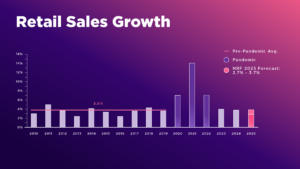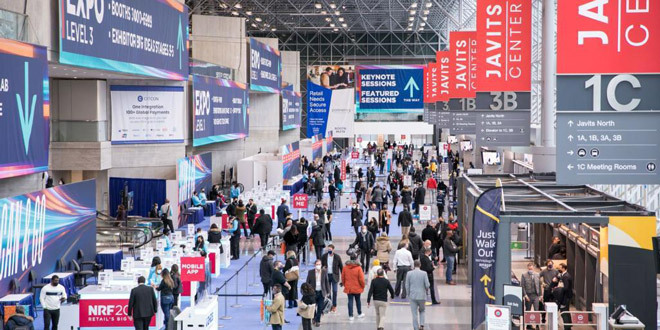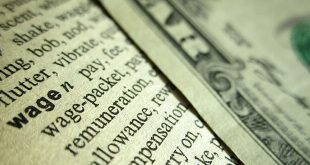The National Retail Federation (NRF) hosted its fifth annual State of Retail & The Consumer presentation, covering a variety of topics, including how to serve customers, consumer trends and a 2025 retail sales forecast. The presentation also featured insights from retail CEOs and small business owners on how they’ve positioned themselves for success in 2025.
The NRF predicts retail sales during 2025 will grow between 2.5% and 3.7% over 2024 to reach between $5.42 trillion and $5.48 trillion.
“Overall, the economy has shown continued momentum so far in 2025—bolstered by low unemployment and real wage gains—however, significant policy uncertainty is weighing on consumer and business confidence,” says Matthew Shay, NRF president and CEO. “Still, serving customers will remain retailers’ top priority no matter what the economic environment.”
The 2025 sales forecasts compare with the 3.6% annual sales growth of $5.29 trillion in 2024. This year’s forecast is also in line with the 10-year pre-pandemic average annual sales growth of 3.6%.
Non-store and online sales, included in the total figure, are expected to grow between 7% and 9% year over year to a total between $1.57 to $1.6 trillion. For comparison, non-store and online sales grew 8.1% to a total of $1.47 trillion in 2024.
 In regards to brick-and-mortar stores, the NRF says the current U.S. storefront footprint is near an all-time high and has continued to see retailers innovate with new technologies—brick-and-mortar storefronts will continue to be relevant to consumers.
In regards to brick-and-mortar stores, the NRF says the current U.S. storefront footprint is near an all-time high and has continued to see retailers innovate with new technologies—brick-and-mortar storefronts will continue to be relevant to consumers.
NRF expects GDP growth to decline to just below 2% in 2025, down from 2.8% in 2024 and below the trend of the past few years.
“Any way you look at it, a lot is riding on the consumer,” says Jack Kleinhenz, NRF chief economist. “While we do expect slower growth, consumer fundamentals remain intact, supported by low unemployment, slower but steady income growth and solid household finances. Consumer spending is not unraveling.”
Kleinhenz says although consumer confidence is declining, largely due to lingering inflation and consumers’ anxiety over tariffs, it doesn’t mean there will be an immediate drop in consumer spending.
“It’s the hard data on employment, income and tariff-induced inflation—not consumer sentiment—that supports our view of a slower trajectory for consumer spending,” Kleinhenz says.
With the implementation of tariffs, NRF expects PCE inflation during 2025 to remain at the current level of about 2.5%.
 Hardware Retailing The Industry's Source for Insights and Information
Hardware Retailing The Industry's Source for Insights and Information






